Submitted by WA Contents
EFFEKT and C.F. Møller Architects complete maritime academy in a gridded volume in Denmark
Denmark Architecture News - Jan 15, 2024 - 13:27 2504 views
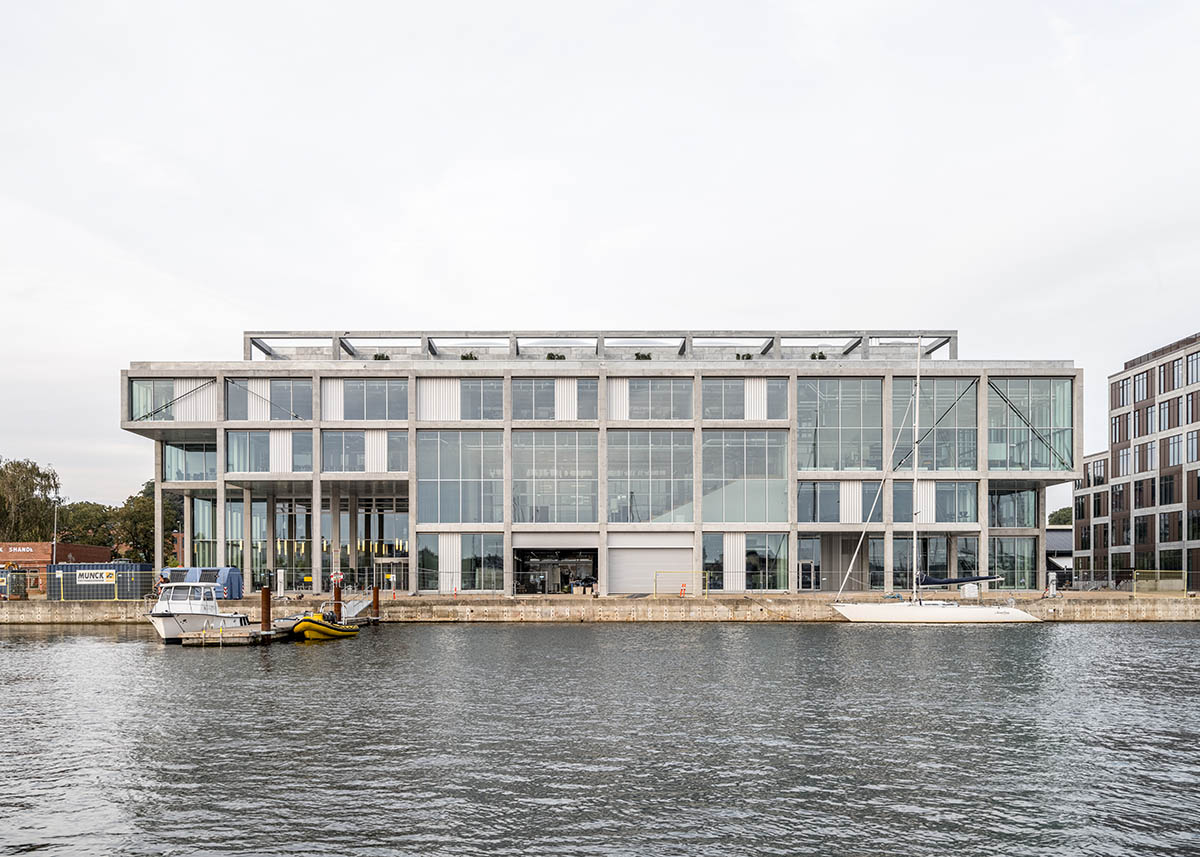
EFFEKT and C.F. Møller Architects has completed a new maritime academy in a gridded volume in the old port and shipping town of Svendborg, Denmark.
Named Svendborg International Maritime Academy (SIMAC), the 12,500-square-metre building represents the largest maritime education institution in the country on the harbour's edge.
The building was used to be spread out on several addresses around town, but has now been united in one building on the harbour front with teaching and study space for 1.000 students.
EFFEKT and C.F. Møller Architects have completed the building in collaboration with Artelia.

The building unites the site’s various scales and architectural figures, such as cranes, container ships and clean, geometric industrial buildings, in a bold and distinctive concrete framework.
"We set out with the desire to create an extremely raw, and transparent grid structure, contextually adapted to its industrious setting – while capable of staging the school’s workshop-based content, into a scaffolding of spatial possibilities, centred around encouraging young people to encounter and exchange ideas through informal meetings – both within and out towards its surroundings, activating the whole harbour front of Svendborg," said Mads Mandrup, partner and architect at C.F. Møller Architects.
A spatial connection to the harbour and the city is the prefabricated concrete elements gather the load-bearing and spatial structure into a resilient grid of columns and girders.
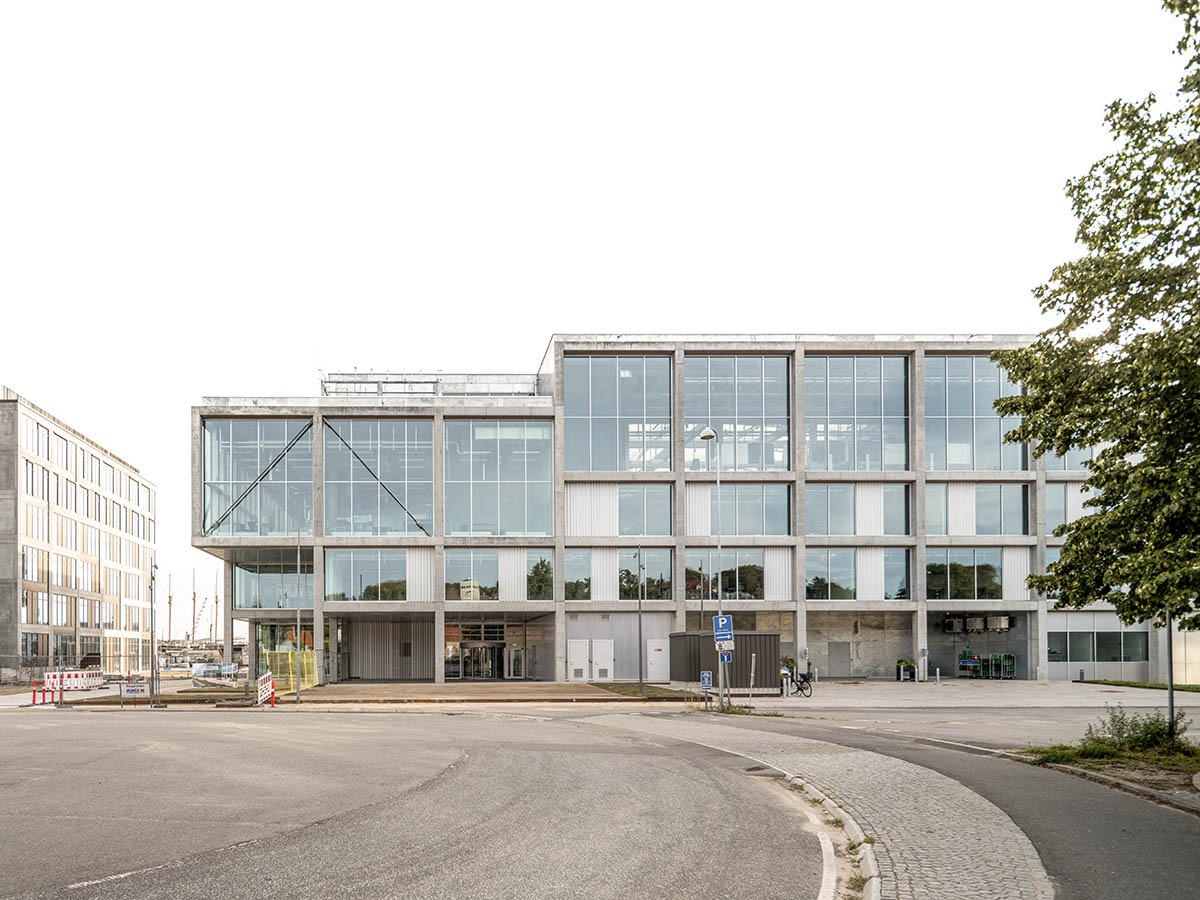
This approach maximizes the load-bearing capacity of the elements while reducing material consumption. The facade plane is pulled back, so that the concrete grid manifests itself as the dominant element also in the external appearance of the education institution. The result is a simple and honest expression based on functionality and utilisation.
The building’s transparent façade allows natural light to flood the interior in the daytime and as twilight sets, the building becomes a beacon, illuminating the harbour front.
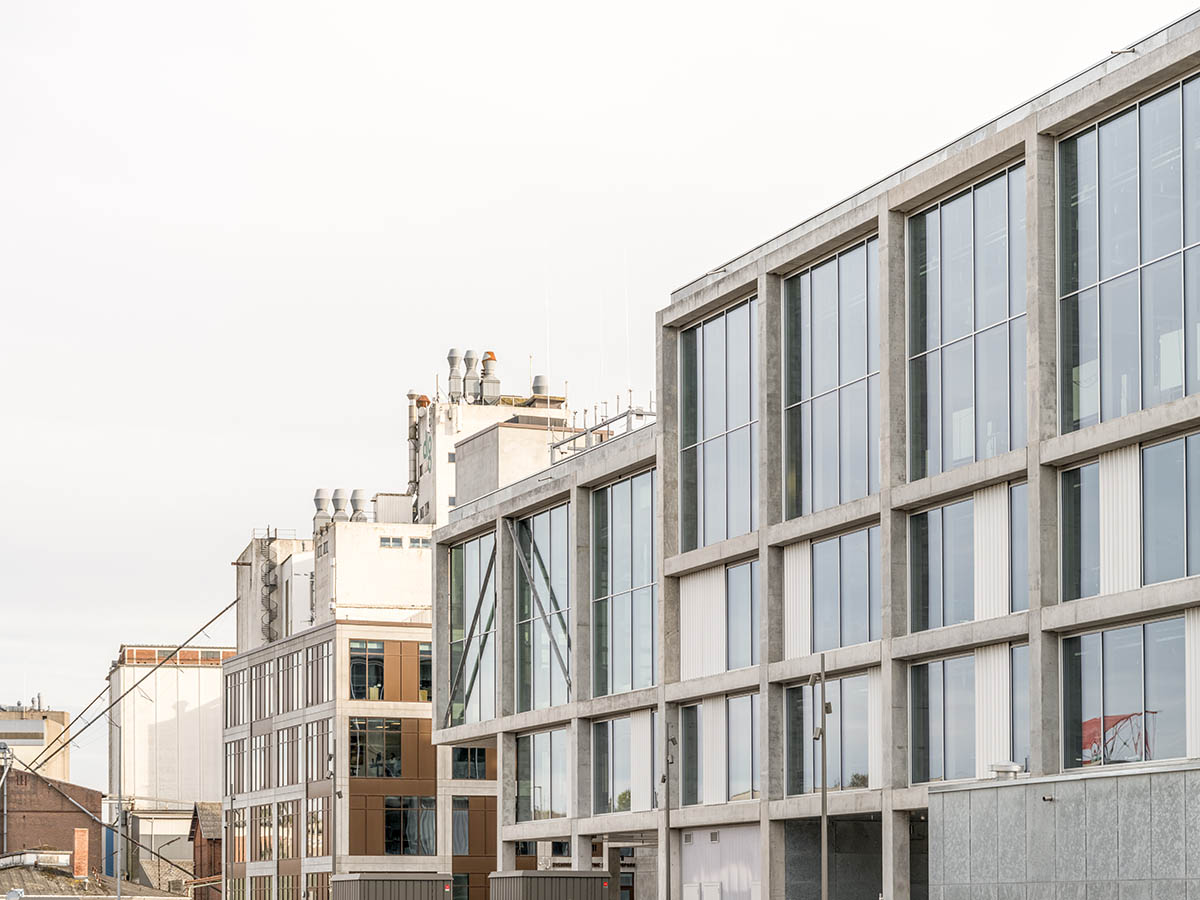
According to Sinus Lynge, architect and co-founder of EFFEKT Architects, the idea was already present during the competition phase that the school should spatially connect to the harbour and the city, the industrial area, and the new residential area: "This has succeeded to a high extent because you see the same raw, minimalist exposed column-girder structure both from the outside and the inside."
"The space essentially flows through the building's structure, and the intriguing aspect concerning the concrete elements is that SIMAC’s structure is the architecture," he said.
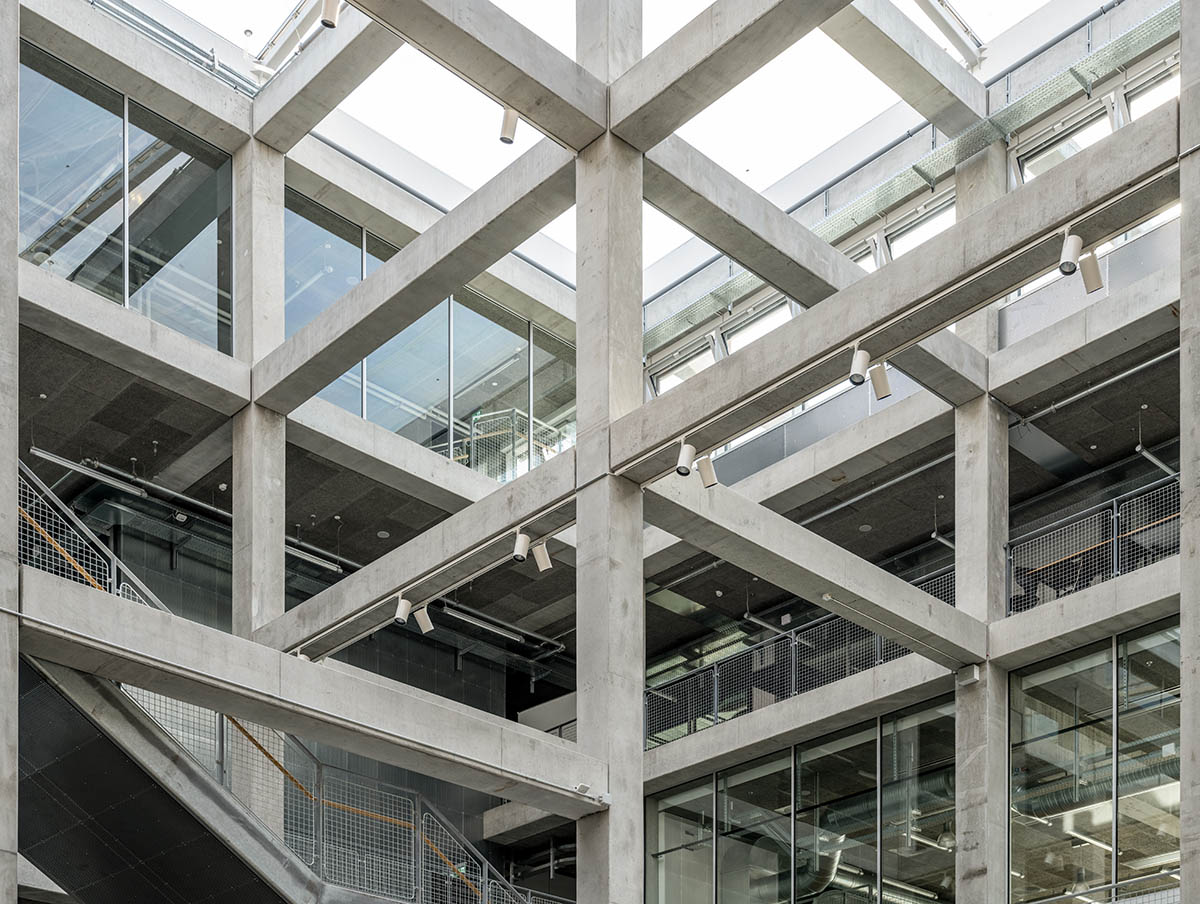
Public access all the way to the rooftop
The school opens up to its surroundings on all four corners, where the supporting corner columns have been removed. The upper floors jut out like tall canopies over the entrances allowing public access to the communal facilities, such as the building's café and canteen, which are open to visitors whether they prefer to dine indoors or enjoy the outdoor square facing the harbour.
A communal rooftop terrace offers panoramic views of the harbour, Svendborg Sund, and the city while the quay itself becomes an outdoor laboratory that highlights the school's work and maritime virtues.

Maximum flexibility in space utilization
Inside, SIMAC maintains an industrial aesthetic, with exposed concrete surfaces and durable floors built to withstand heavy use. Glass partitions connect the atrium with the teaching rooms, creating an atmosphere of openness and encouraging spontaneous interaction and collaboration among students and faculty.
The school's impressive facilities include a massive ship engine in the machine laboratory and a welding simulator, offering a hands-on experience.
It was essential for the two architecture studios to ensure that SIMAC would be long-lasting. The building's modular construction grid allows for maximum flexibility in space utilization ensuring that classrooms, workshops, and offices can be reconfigured as needed without compromising the structural integrity. It was also a key concern to avoid superfluous materials, which is why everything is exposed, and no unnecessary ceilings, facades, or surface coverings have been used.
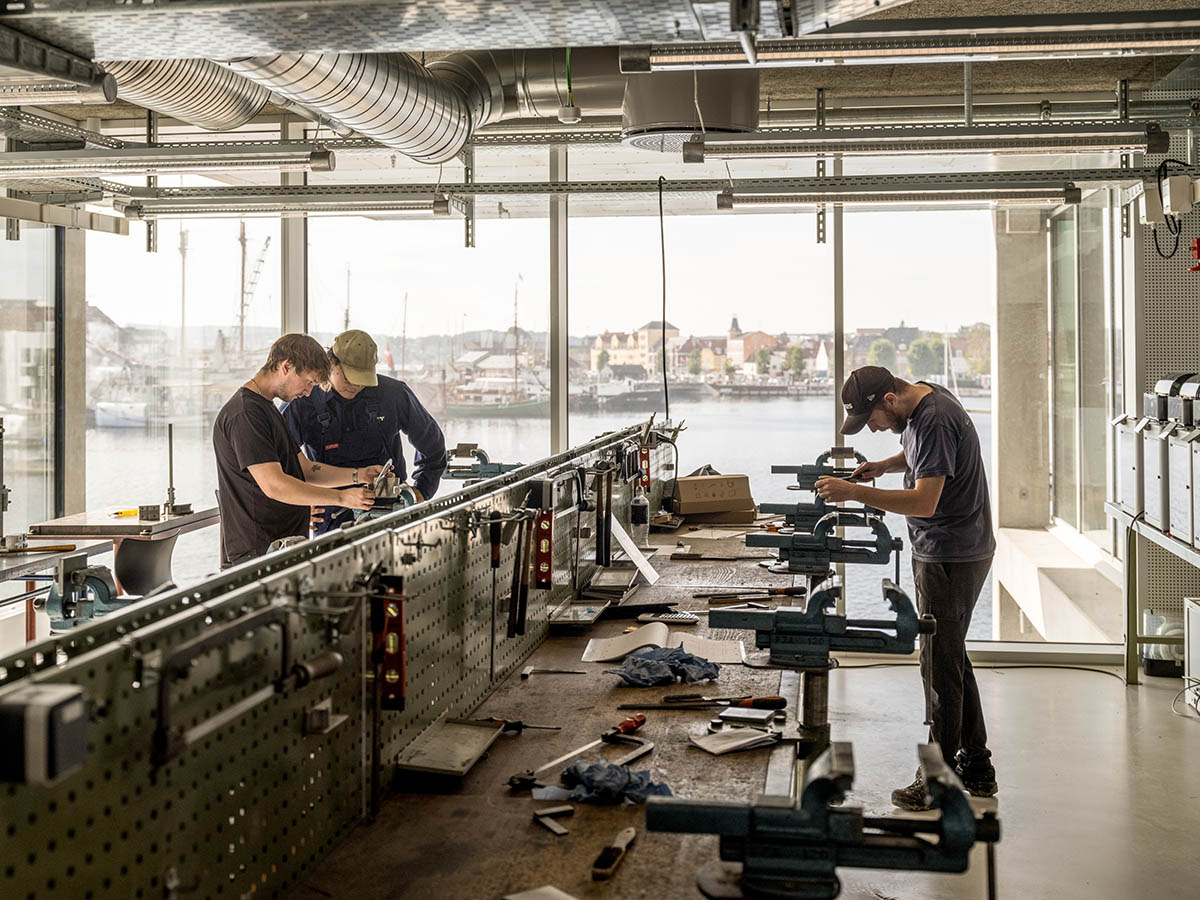
"The new SIMAC is a true urban mixing chamber, centred around an internal courtyard – cascading upwards along stairways and open balconies, creating connections, knowledge sharing and a vibrant student life larger than the building itself – stimulating communication and informal exchange between students, teachers and visitors – creating both architectural and human encounters in a unique setting, which will last longer than the students will spend in the building," said Mads Mandrup.
A framework for community and collaborationAt the centre of the building lies a spacious, light-filled 20-meter-high atrium that connects the various floors both visually and logistically. Four double-height areas surrounding the atrium house essential functions, such as a canteen, auditoriums, and specialized workshops. The staircase, a key element of the structure, leads to the communal rooftop terrace. This dynamic arrangement fosters a sense of community and collaboration within the building.
"SIMAC embodies the experience of an authentically raw building that serves as a framework for all the people who will inhabit it. It is truly a pleasure to hand over the school to the users and see the students sit in the cafeteria, utilize the workshops, and traverse the stairs and atrium space – a unique gathering space at the heart of the school, which simultaneously opens up the building to the harbour and the city – a catalyst for the development of the new district at the North Quay," said Sinus Lynge.
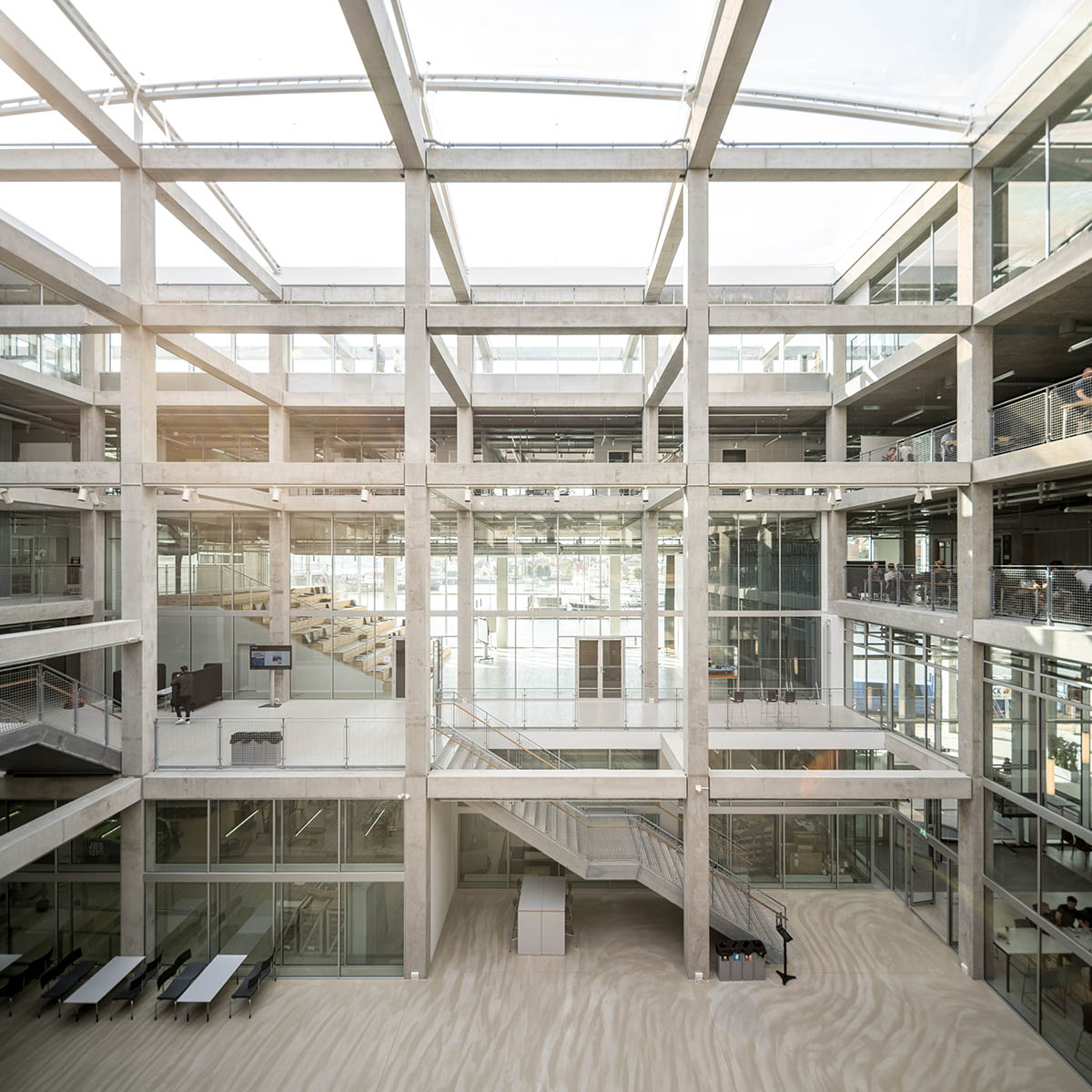
Part of a living district
The education institution forms part of a masterplan for a new district at the North Quay in Svendborg with the aim of transforming a 5,5 ha industrial area to a new living district with education, business, homes and recreational areas.

The opening of SIMAC marks the completion of the first stage of the masterplan, which includes a specific proposal for new urban green areas that will secure this part of Svendborg against any potential extreme rainfall in the future.
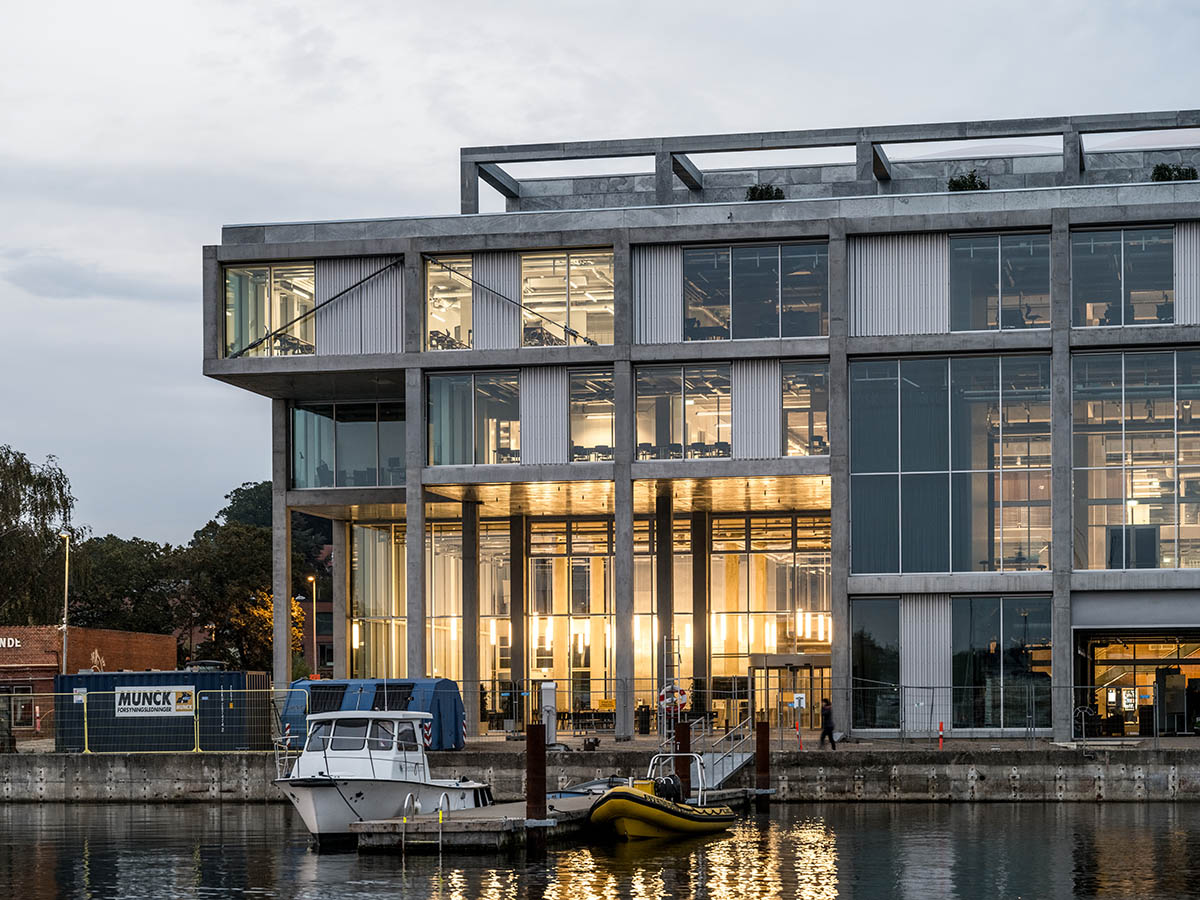





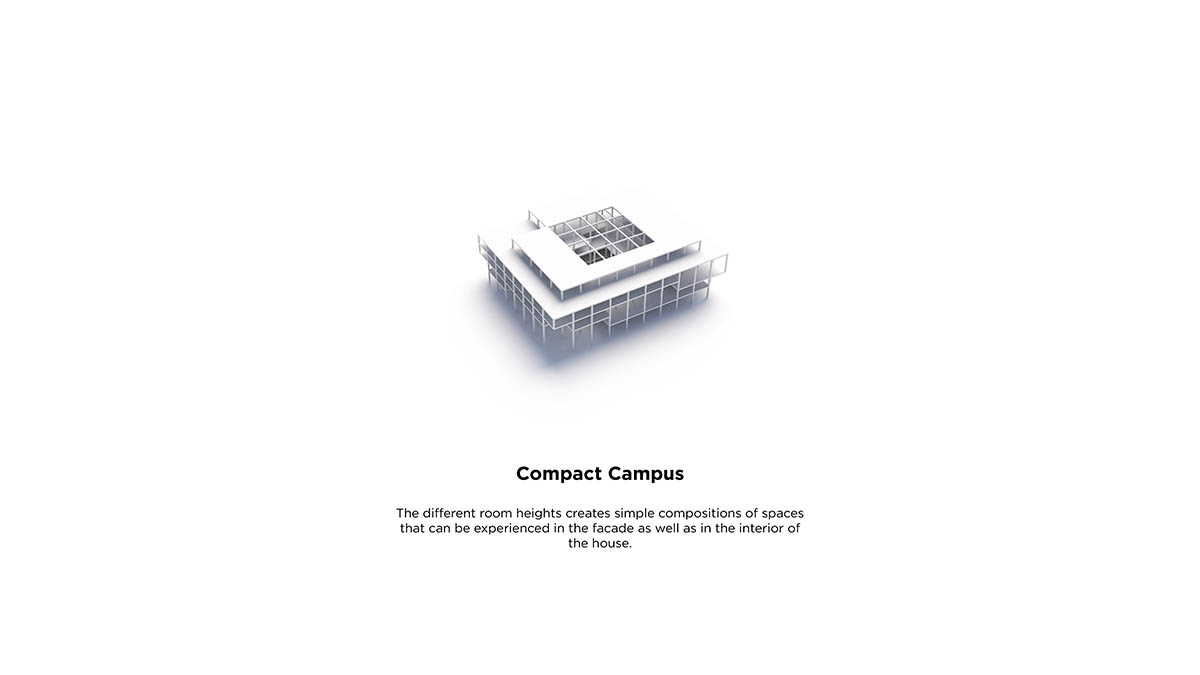


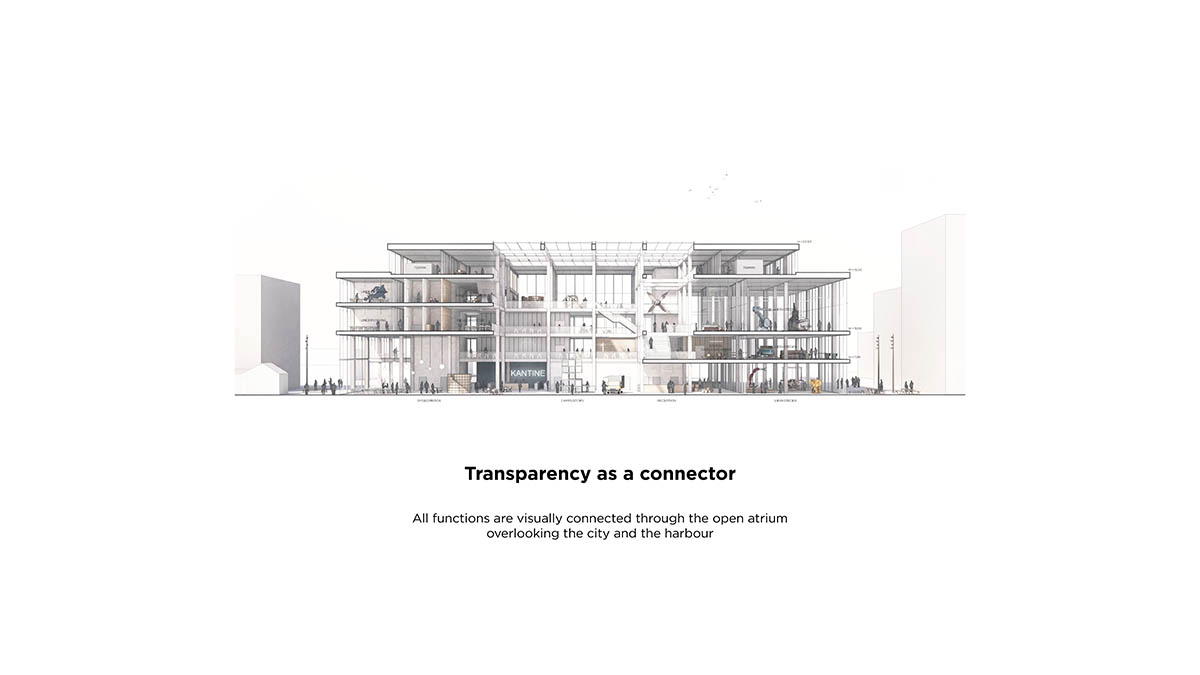

Project facts
Project name: Svendborg International Maritime Academy (SIMAC).
Architects: EFFEKT and C.F. Møller Architects
Location: Svendborg, Denmark.
Year: 2019 - 2023
Size: 12,500m2
Client: SMUC
Competition: 1st prize, Realized
Competition team: Sinus Lynge, Tue Hesselberg Foged, Toni Rubio Soler, Pola Rebecca Koch, Kasper Reimer, Yulia Kozlova, Evgeny Markachev, Arielle Rose Khosla
Building Design team: Sinus Lynge, Tue Hesselberg Foged, Toni Rubio Soler, Ulrik Fenger Mathiasson, Henrik Christensen, Cristian Daniel Rusu, Rie Celina Nielsen, Louise Bjerregaard, Mie Burchardi, Sophie-Amalie Rannje, Chiara Giammarco, Christoffer Gotfredsen, Alexis Anderson, Zahra Khademi, Virginie Le Goffic, Valts Kasparans, Olivia Von Bülow, Sofia Basse Gøbel, Katrine Lyn Andersen.
Consultants: Artelia
All images © Rasmus Hjortshõj.
All drawings © EFFEKT and C.F. Møller Architects.
> via EFFEKT and C.F. Møller Architects.
